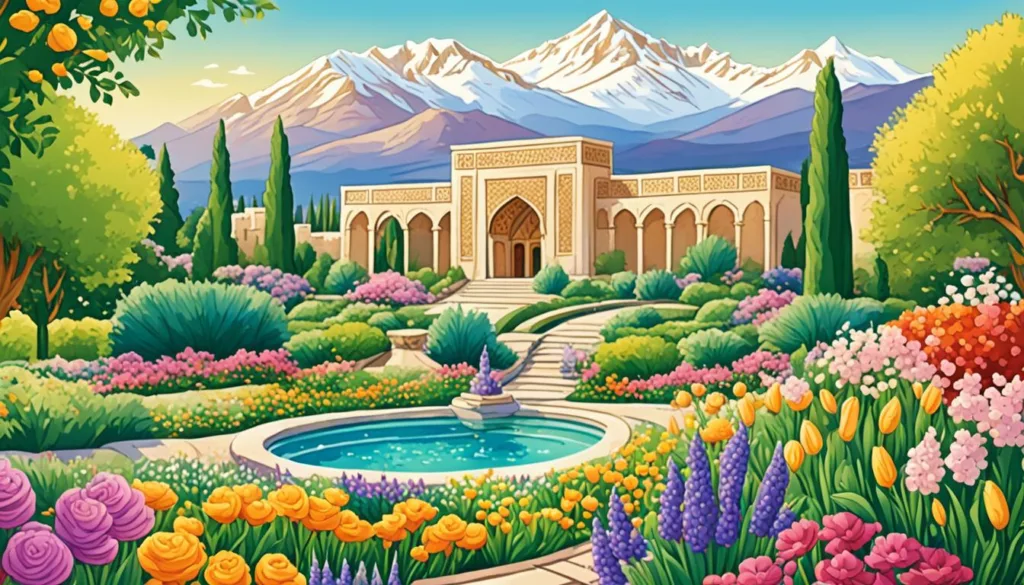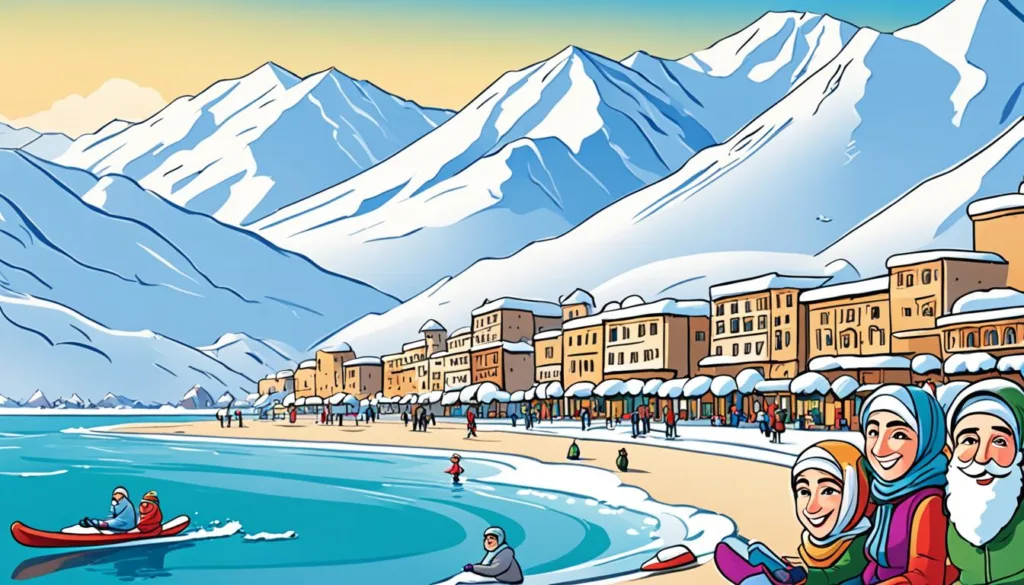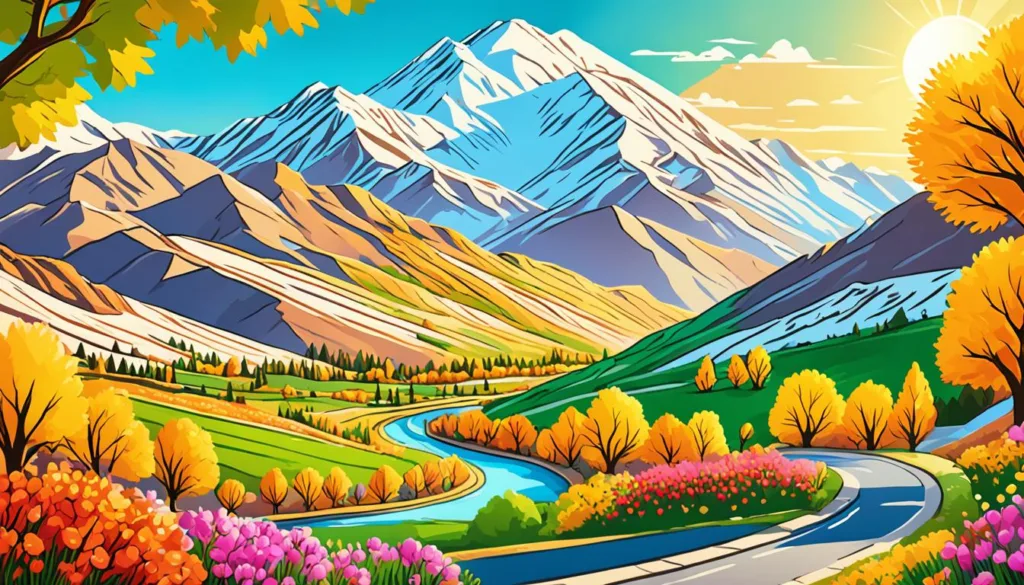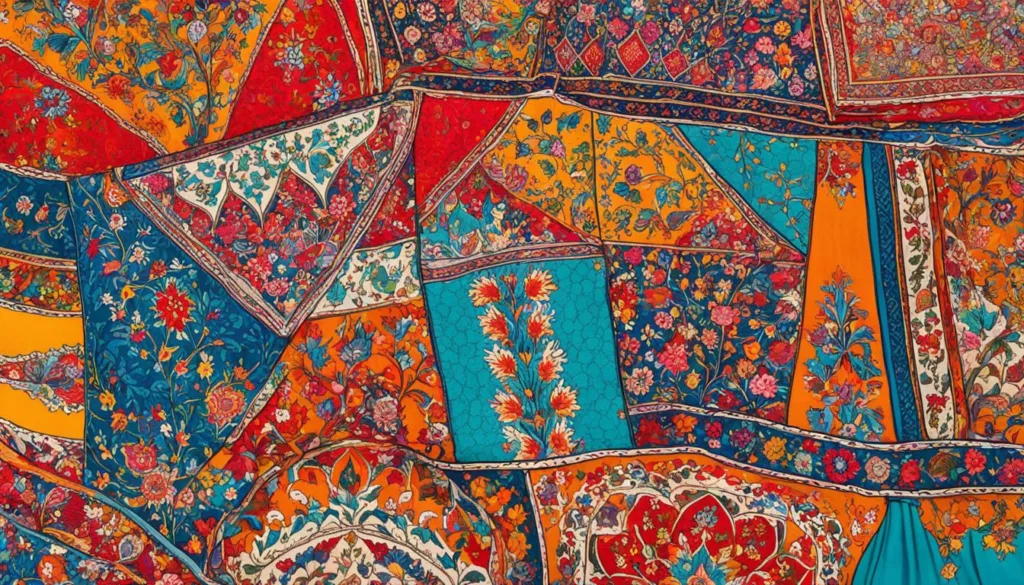Encompassed by a mosaic of climates and a tapestry of cultural wealth, Iran offers a year-long gateway to explorers seeking both ancient marvels and natural wonders. But when is the Best Time to Visit Iran? Contrary to popular travel trends, the Ideal Months to Visit Iran might surprise you as the land reveals its secrets in an atmosphere devoid of the typical tourist bustle. As the Iran Travel Seasons map the ebb and flow of its diverse landscape, from arid deserts to lush mountains, understanding the distinct Climate in Iran and Tourist Seasons Iran can be pivotal in crafting an unparalleled journey enriched with heritage and beauty.
The Iran Weather Guide underscores the importance of timing, and the ancient nation’s seasonal rhythm welcomes travelers to an array of experiences that change as dynamically as the scenery itself. Venture beyond expectations and redefine your travels with the knowledge of when to set forth into the cradle of civilization.
Key Takeaways
- Discover why certain months could redefine your travel experience to Iran.
- Unearth the benefits of visiting during what many consider to be the “off-season” in Iran.
- Appreciate the nuances of Iran’s climate and how it can shape your explorations.
- Gain insight into which seasons bring forth Iran’s cultural festivals and ancient spectacles.
- Understand the interplay between Iran’s seasonal landscapes and tourist dynamics.
Discovering Iran’s Historical Richness During Autumn
As the leaves turn to shades of amber and gold, Autumn Travel Iran becomes a journey through a living museum where each tree and historical monument basks in the soft glow of the season. This period is also the perfect time for those seeking Off-peak Travel Iran, as the tourist crowds simmer down, allowing for a more serene exploration of Iran’s rich heritage. The inviting Iran Weather Guide would tell you that the country experiences a moderate climate in autumn, ideal for experiencing the cultural and natural beauty that unfolds.
Unveiling the Palette of Fall Colors in Persian Gardens
In Iran, autumn casts a painterly stroke across the country’s famed Persian gardens. The reflection of colorful flora in the artistic waterways brings to life the intricate designs and architectural genius of historical sites. Ancient estates like the Eram Garden in Shiraz and the grounds of the Chehel Sotoun in Isfahan, transform into a kaleidoscope of colors, captivate visitors and photography enthusiasts alike.
Mehregan Festival: A Cultural Encounter
The Mehregan Festival, also known as the Persian Festival of Autumn, is an age-old celebration that marks friendship, affection, and love. Observed since the Zoroastrian era, this festival brings communities together with shared meals, music, and traditional festivities, highlighting the joyous side of Iranian culture amid the backdrop of breathtaking autumn scenery.
Lesser Crowds, More Intimate Explorations
The quieter months of autumn offer a more personal glimpse into Iran’s mystic past. Whether wandering through the ancient city of Persepolis or delving into the less frequented ruins of Pasargadae, the absence of peak season bustle allows for thoughtful contemplation of Iran’s historical narratives and artistic grandeur.
| Destination | Autumn Highlight | Visitor Experience |
|---|---|---|
| Persepolis | Golden hues on ancient stone | Immersive archaeological exploration |
| Kurdistan Valleys | Fall foliage in mountainous landscapes | Scenic hikes and cultural encounters |
| Golestan National Park | Colorful forest canopies | Wildlife sightings and photography |
Traveling to Iran during autumn not only promises the beauty of the landscape but also provides the advantage of visiting during a time that is outside of the Peak Season in Iran, ensuring a more relaxed and enriching experience. The combination of pleasant weather, reduced crowds, and the celebration of cultural festivals like Mehregan makes autumn an ideal season for those who seek the essence of Iran’s historical riches.
Spring in Iran: A Season of New Beginnings and Cultural Festivities
As the Climate in Iran transitions from the chill of winter, spring heralds a period of rejuvenation and cultural festivities. Tourist Seasons Iran sees a significant upswing, beginning in March and extending through June, when the nation blooms with natural and social vibrancy. With the landscape refreshed by seasonal rains, Iran stands out as the Best Time to Visit Iran for those seeking a blend of outdoor adventures and traditional cultural experiences.
At this time, cities such as Shiraz are not just urban sprawls but hubs of historical and botanical beauty. The famous Eram Garden, with its quintessential Persian design, bursts into life, while the pink mosque of Nasir al-Mulk reflects the incandescent light through its stained glass, creating a mosaic of color that embodies the spirit of Iran Travel Seasons. But it is not just the cities that call to travelers; the entire country beckons with activities and sights suited to the ideal tourist season.
Spring in Iran is when every stone and corner tells a story, every petal and leaf sings songs of the land’s perennial beauty.
Below is a glance at what travelers can expect during this hopeful season:
| Month | Highlights | Cultural Events |
|---|---|---|
| March | Beginning of the Persian New Year – Nowruz | Festivities including Haft-Seen, public picnics |
| April | Peak bloom for gardens and nature walks | Sizdah Bedar (Nature Day) |
| May | Perfect weather for desert explorations | Rosewater festival in Kashan |
| June | End of the high season with less crowd | International Quds Day |
It is the season for exploration, from the ancient ruins of Persepolis that echo the might of past empires to the tranquil streets of Shiraz, blooming with flowers and history. Iran during spring is a tapestry woven with vibrant threads of nature and tradition, making any visit a profound journey through time and culture.

Best Time to Visit Iran: Harmonizing Climate and Culture
Discovering the ideal months to visit Iran takes travelers on a journey where unrivaled cultural experiences meet the most agreeable climate conditions. Whether one is wandering through the bustling bazaars or seeking solitude in the vast deserts, spring in Iran is a period that beautifully marries balmy weather with the nation’s vibrant cultural heritage.
Pleasant Weather for Urban and Desert Adventures
For those seeking the ultimate exploration experience, the Iran travel seasons present various opportunities, with spring emerging as a clear favorite. From the historical depths of Tehran’s urban sprawl to the tranquil retreats of Kerman’s desert landscapes, the weather from March to May is invitingly mild. This enchanting climate opens the doors to a plethora of activities, illuminating every corner of this storied country under a gentle sun.
Nowruz Celebrations: Experiencing Persian New Year
Immersing oneself in Nowruz, the Persian New Year, offers a glimpse into the soul of Iran. As the nation blossoms into its best time to visit Iran, the allure of age-old traditions fuses with a collective spirit of rejuvenation. Families unite, special dishes grace tables, and laughter fills the air, providing travelers with an exceptional cultural odyssey during the joyous Nowruz festivities.
| Month | Climate | Cultural Highlights |
|---|---|---|
| March | Mild temperatures, vibrant landscapes | Nowruz Celebrations, Haft-Seen |
| April | Warm without extremes, clear skies | Sizdah Bedar (Nature Day) |
| May | Pleasantly warm, ideal for sightseeing | Rosewater Festival in Kashan |
When planning your escape to this enchanting nation, consider the options each season presents. Yet, for an impeccable blend of genial weather and enriching culture, spring remains the best time to visit Iran, promising an experience both memorable and magically serene.
Summertime Explorations: From Mountain Peaks to Persian Gulf Beaches
Iran’s summer months, widely known as the off-peak travel Iran period, embrace the essence of exploration in a climate that few dare to experience. July through September in Iran is not just about the soaring temperatures but also the discovery of serene locales sans the crowds. Whether seeking the thrill of the peaks or the solace of the beaches, summer is the time to delve into Iran’s diverse landscapes.
While the term “peak season in Iran” is usually associated with springtime travel, the term takes on a literal dimension in summer as adventurers ascend the cooler, less trodden mountainous regions. A journey to the west and northwest unveils a world apart, where the climate is more forgiving and the Iran weather guide recommends adventurous spirits to partake in trekking and climbing activities.
Moreover, the allure of the Persian Gulf coastline beckons travelers with its tranquil beaches and warm waters — a stark contrast to the arid landscapes inland. The reduced pollution levels during summer gift visitors with clear blue skies, ensuring that the natural beauty of Iran is showcased in its most authentic form.
| Summer Activity | Region | Benefits |
|---|---|---|
| Trekking | Alborz and Zagros Mountains | Cooler altitudes, scenic views |
| Climbing | Mount Damavand and Tochal | Challenging ascents, professional routes |
| Hot Springs Relaxation | Ardabil and Mahallat | Therapeutic waters, natural surroundings |
| Beach Leisure | Persian Gulf coast | Warm waters, serene environment |
The serendipitous combination of low season tranquility and captivating scenery offers a unique experience for those embarking on off-peak travel in Iran. Each location lends itself to a peaceful retreat with the added joy of personal discovery, far from the bustle of mainstream tourist routes.
The Serene Beauty of Iranian Winters: From Ski Slopes to Southern Coasts
As the mercury drops, the off-peak travel season in Iran ushers in a distinct blend of exhilarating outdoor activities and tranquil leisure. Winter’s embrace offers a sense of stillness across Iranian landscapes, enticing those who seek both the thrill of the alpine heights and the gentle repose by the coast. For those yearning to escape the typical tourist seasons, Iran’s wintertime provides an enchanting backdrop, contrasting the snowy peaks with the temperate southern shores.

Iran’s Alpine Escapades: Skiing in the Alborz Mountains
Thrill-seekers and snow enthusiasts are drawn to the pristine slopes of the Alborz Mountains, where some of the best skiing adventures await. With its favorable climate in Iran during winter, the Alborz range becomes a playground for skiers of all skill levels. The region, with its accessible yet challenging terrains, promises an off-peak travel experience that is both affordable and less crowded than many international destinations.
Winter Warmth in the South: Ideal for Outdoor Enthusiasts
Conversely, Iran’s southern coasts invite outdoor enthusiasts to enjoy winter warmth. Here, the tourist seasons of Iran take on a different hue. The coastal areas of the Persian Gulf maintain mild temperatures, perfect for exploring the rich biodiversity and the tranquil sea-side landscapes. The contrasting environments of Iran’s diverse climate offer travelers a winter escape that caters to diverse preferences.
- Experience the rush of skiing in one of the world’s most ancient lands.
- Soak in the gentle winter sun on the inviting southern beaches of Iran.
- Revel in the calm of the off-peak season for a more personal connection with nature and culture.
Whether longing for a serene retreat or an adventurous sojourn, Iran’s climate in winter has a special allure. As the country blankets in snow or basks in the southern sun, travelers can find solace in a season less travelled, yet full of unexpected wonders.
Navigating Iran’s Landscapes: Essential Travel Tips Across Seasons
Embarking on a journey through Iran’s diverse climates and rich cultural tapestry requires some savvy planning. Whether you’re venturing through the bustling bazaars or exploring the tranquil deserts, here are pivotal Travel Tips Iran bound to enhance your trip regardless of the Tourist Seasons Iran. A thoughtful consideration of the Climate in Iran paired with a strategic approach to your itinerary will ensure a memorable adventure in this ancient land.

Advance preparations are key, so be sure to apply for your visa early, especially if you’re aiming to visit during the high season from March to May. Brushing up on some basic Farsi phrases will not only enhance communication with the friendly locals but also endear you to them. It’s also crucial to stay abreast of local customs and current travel advisories. Here’s a rundown to help you navigate your travels across Iran:
- Planning Ahead: Accommodation and transportation can fill up quickly during peak seasons; booking well in advance is advisable.
- Visa Applications: These should be secured early to avoid any potential delays, which are common closer to travel dates.
- Understanding the Climate: Iran’s weather varies greatly from region to region, so packing accordingly is a must.
- Local Etiquette: Respect local traditions and dress codes to ensure smooth interactions and experiences.
| Season | Expected Climate | Recommendations |
|---|---|---|
| Spring (March-May) | Mild and Pleasant | Perfect for city tours and Nowruz celebrations. |
| Summer (June-August) | Hot, especially in deserts | Visit cooler regions in the west and northwest. |
| Autumn (September-November) | Cooling down, moderate | Explore historic sites with fewer crowds. |
| Winter (December-February) | Varies, cold in the north | Enjoy skiing or warmer southern coasts. |
Pro Tip:
Always carry a printed copy of important documents and familiarize yourself with the nearest embassies and medical facilities for safety.
Cultural Tapestry: Festivals and Traditions Shaping Iran’s Travel Seasons
Iran’s rich cultural heritage unfolds throughout the year with a series of vibrant festivals and time-honored traditions that play an intrinsic role in defining the Iran Travel Seasons. The subtle changes in the Iran Weather Guide are often celebrated with age-old customs, linking nature and culture in a colorful tapestry that is as enchanting to a first-time tourist as it is to seasoned travelers.

One of the most anticipated events in the Iranian calendar is Nowruz, marking the arrival of spring. Observing the renowned Persian New Year, visitors can experience the country in full bloom, with festivities reflecting the joyous spirit of renewal. The table, or Haft-Seen, adorned with seven items symbolizing rebirth and health, becomes a central decorative and traditional element in homes and public spaces alike.
Shortly after, the festival of Yalda arrives at the winter solstice, where families and friends gather to revel in the longest night of the year, sharing tales, poems, and traditional foods, a memorable affair for any participant. Such occasions provide travelers with an immersive introduction to Cultural Festivals Iran, where every moment spent is a story untold.
In autumn, the ancient Zoroastrian festival of Mehregan celebrates friendship, affection, and love. Juxtaposed against the crisp air and golden leaves, it offers a unique spectacle illustrating the grace of the Tourist Seasons Iran.
Moreover, the dramatic observance of Ashura, held in the Islamic month of Muharram, unfolds with poignant processions that encapsulate the historic and religious soul of the nation. Witnessing these commemorations allows visitors to grasp the depth of Iranian history and its continuous influence over the people.
The following is an overview of some of the key cultural events that punctuate the Iranian calendar, providing a structured guide for travelers interested in aligning their visits with these special occasions:
| Season | Festival | Description |
|---|---|---|
| Spring | Nowruz | Iranian New Year celebration marked with various customs and public festivities. |
| Summer | Tirgan | A festive time celebrating the water and a mythical representation of the struggle between light and darkness. |
| Autumn | Mehregan | Zoroastrian occasion honoring friendship, knowledge, and affection. |
| Winter | Yalda | Night of the winter solstice celebrated with family, poetry readings, and seasonal foods. |
Each of these festivals not only marks the passage of seasons but also provides indelible impressions and learnings about the people, their ways of life, and the values they hold dear. For a traveler seeking authentic experiences and a deeper understanding of the places they visit, planning a trip around the Cultural Festivals Iran can offer just that, while a Tourist Seasons Iran guide ensures pleasant weather conditions coincide with cultural immersions.
Conclusion
Embarking on a voyage to Iran is to immerse oneself in a remarkable seasonal symphony, where the profound echoes of antiquity blend harmoniously with the vibrant spectacle of nature. The best time to visit Iran is a subjective melody that varies from one traveler to another, striking different chords across the expanse of the year. Each season in Iran carries a distinct rhythm, setting the stage for a spectrum of experiences—from the golden mists of autumn revealing the country’s illustrious history, to the flourishing life of spring that dances alongside Iran’s cultural prosperity.
Iran’s Seasonal Symphony: A Blend of Nature and Antiquity
The enchanting tapestry of Iran’s seasonal attractions unfolds with a rich palette of colors and textures that can inspire any wanderlust-filled heart. Autumn paints the ancient landscapes with a golden brush, while spring adorns them with lush green vitality. Planning travel to Iran requires an appreciation for its temporal artistry, recognizing that your journey could align with the vivid festivities of spring or the tranquil beauty of fall. Each season ushers in its unique set of wonders, inviting an engagement with both the natural world and the relics of times long passed.
Planning Your Journey: Embracing Iran’s Seasonal Splendors
As you contemplate the best time to visit Iran, consider the symphony of experiences that await. Whether it’s waking up to the cool, crisp mornings of winter in the Alborz mountains, or basking in the warm, inviting glow of a summer sunset on the Persian Gulf, Iran promises an adventure that transcends time. With careful planning, your travel can coincide with the myriad of Iran’s seasonal splendors, ensuring an unforgettable exploration of this storied country. Let the journey begin, and may it lead to a treasure trove of memories that echo the impeccable union of nature and history found only in Iran.






